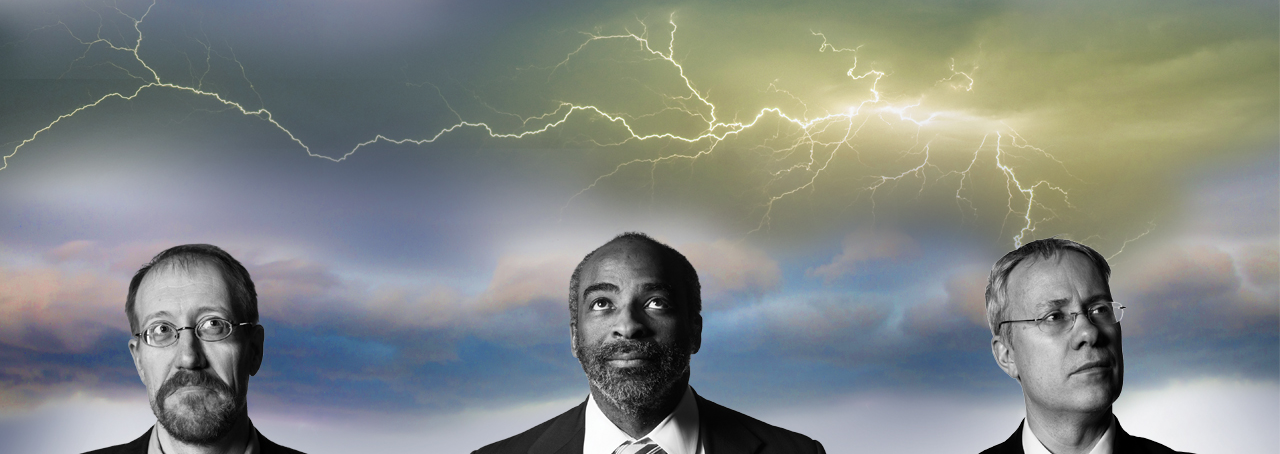NYS Mesonet helps communities brace for extreme storms
Courtesy University at Albany
The most advanced weather observation system in the nation is under construction in New York State, led by the University at Albany and its partners, the National Weather Service and the New York State Division of Homeland Security and Emergency Services.
The system, known as the New York State Mesonet, is a network of 125 state-of-the-art weather stations designed to support better planning for extreme and dangerous weather events. The project is funded through the Federal Emergency Management Agency (FEMA) Hazard Mitigation Grant Program.
The NYS Mesonet system will deliver real-time, high resolution standard observations (i.e., rainfall, temperature, wind speed, wind direction, surface pressure, and humidity), as well as observations critical for flood forecasting (i.e., soil moisture, soil temperature, and snowpack). In addition, the network will observe temperature and winds well above the ground into the atmosphere at a scale and rate that will allow for earlier detection of the ingredients for severe weather.
In the wake of such disastrous storms as hurricanes Irene and Sandy and Tropical Storm Lee, New York Governor Andrew Cuomo called for the development of the mesonet system in order to provide the kind of information that will better prepare state and local communities to respond to future extreme weather events.
UAlbany’s Department of Atmospheric and Environmental Sciences (DAES) and the Atmospheric Sciences Research Center (ASRC), which together boast the largest concentration of weather and climate science researchers in New York State and one of the largest in the nation, are spearheading the design, development and implementation of the NYS Mesonet. The University’s Albany Visualization and Informatics Lab is also providing assistance with network design.
The new system addresses limitations of current weather observation systems, at both the surface level and in the atmosphere.
The National Weather Service in New York relies on 27 automated surface observing system stations across the state to measure weather events. However, this network does not provide the necessary high-resolution data needed to support monitoring and predictive modeling of mesoscale weather events (intermediate size meteorological phenomena, usually less than 625 miles in horizontal range) and emerging weather-related risks, including rainfall and floods, heavy snow and ice, and high winds.
The NYS Mesonet’s 125 weather stations are being deployed all across New York, with many on SUNY campuses and approximately 25 miles between each station. Seventeen sites are to be enhanced with technology to provide information about evolving weather patterns in three dimensions. This pioneering technology is capable of measuring the vertical profile of wind speed and direction up to one kilometer above ground, and temperature and humidity up to 10 kilometers above the ground.
“All data will be collected, archived, and processed in real-time, feeding weather prediction models and decision-support tools for users across the greater New York region,” said Everette Joseph, ASRC director and co-principal investigator for the FEMA grant.
“Not only will the system enable emergency management decision-makers to better plan for and mitigate the damaging effects of extreme weather events, but it will also benefit a range of sectors susceptible to weather variability, including road and rail transportation, aviation, energy, agriculture, tourism, and commerce,” said Chris Thorncroft, DAES chairman and FEMA grant coprincipal investigator.
Supported by $23.6 million in funding, the NYS Mesonet is expected to be completed in 2017. Project manager for the system is Jerald Brotzge, former managing director and senior scientist at the University of Oklahoma’s Center for Analysis and Prediction of Storms.
The NYS Mesonet is one element of the Atmospheric and Environmental Prediction and Innovation Center, which brings together UAlbany’s internationally recognized weather and climate science faculty.
comments powered by Disqus


